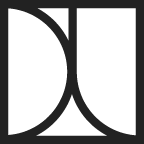What I also uncovered during my research was past A/B tests that Hotwire had launched looking at the same issue. The first was a Stepped layout, and the second test was an Accordion style layout. What was interesting was both tests failed to make a meaningful conversion lift, despite our initial assumption.
At this point I had to rethink the initial proposal that a new layout is inherently better, despite all the things we liked about their pros from a theoretical user experience perspective, it gave me actual context from the perspective of our users.
Proposal
As a result of this new perspective, I tried to take a more user centered approach with my proposal. Obviously, users aren’t going to look at a page and criticize it for not directing them through the checkout forms in a slick fashion, but instead they are more concerned of the personal matter at hand, booking their trip and all the logistics surrounding that.
With that in mind, I took a more critical look at what were the actual problems with the billing page. From this, and by looking at other tests, one pattern that repeatedly surfaced was the issue of buyer confidence that the company has been struggling with for a while across the board from both a UX and Branding perspective. Some of the conclusions I started to draw from this is that perhaps here is a good opportunity to design with friction in mind, so that we can include more clarity and provide more confidence for the user as they book.
